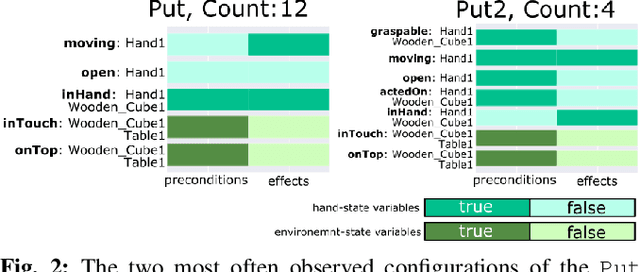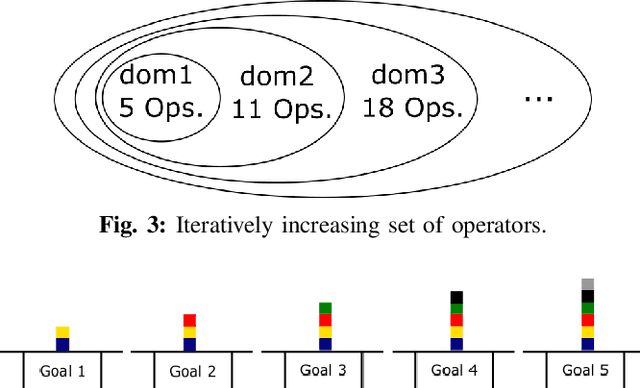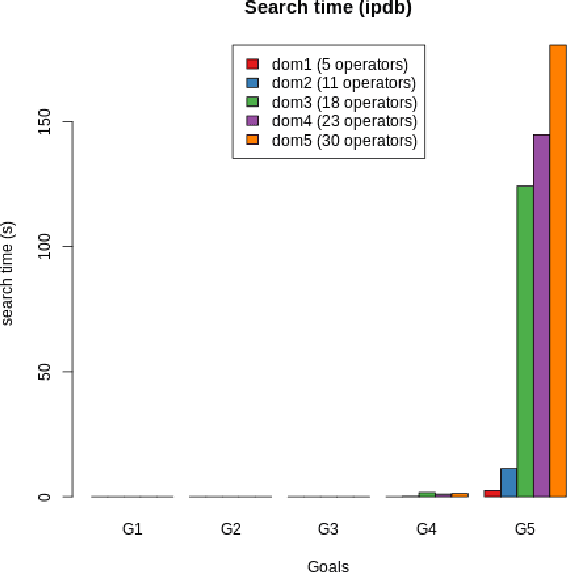Optimizing robot planning domains to reduce search time for long-horizon planning
Paper and Code
Nov 09, 2021



We have recently introduced a system that automatically generates robotic planning operators from human demonstrations. One feature of our system is the operator count, which keeps track of the application frequency of every operator within the demonstrations. In this extended abstract, we show that we can use the count to slim down domains with the goal of decreasing the search time for long-horizon planning goals. The conceptual idea behind our approach is that we would like to prioritize operators that have occurred more often in the demonstrations over those that were not observed so frequently. We, therefore, propose to limit the domain only to the most popular operators. If this subset of operators is not sufficient to find a plan, we iteratively expand this subset of operators. We show that this significantly reduces the search time for long-horizon planning goals.
 Add to Chrome
Add to Chrome Add to Firefox
Add to Firefox Add to Edge
Add to Edge